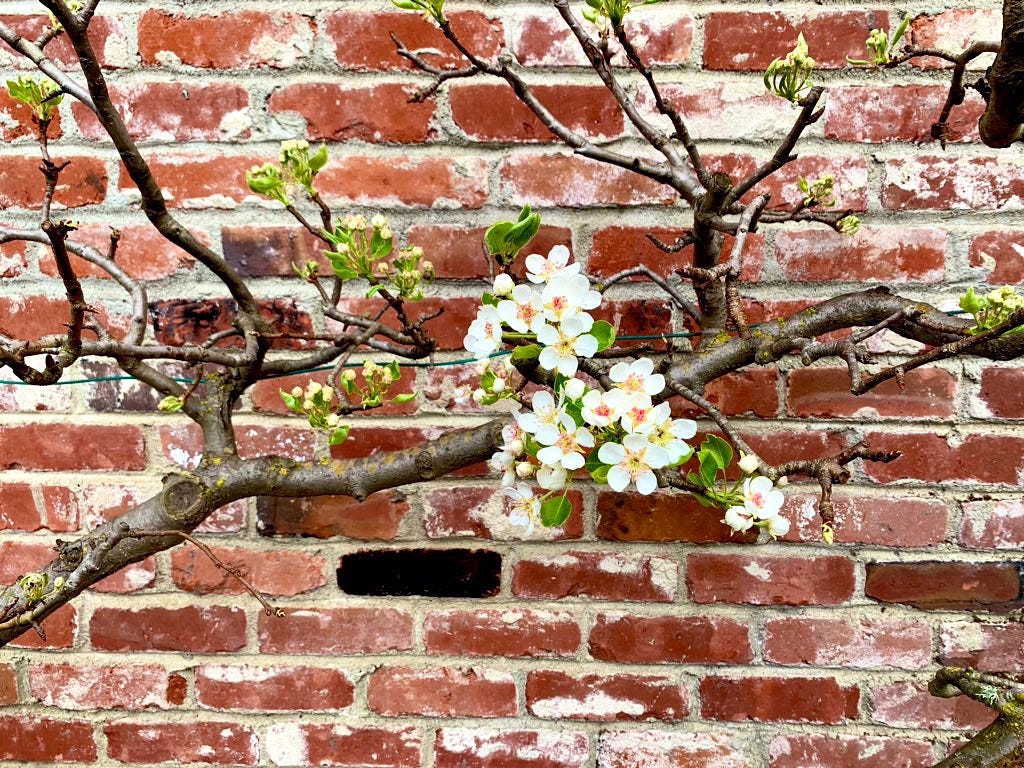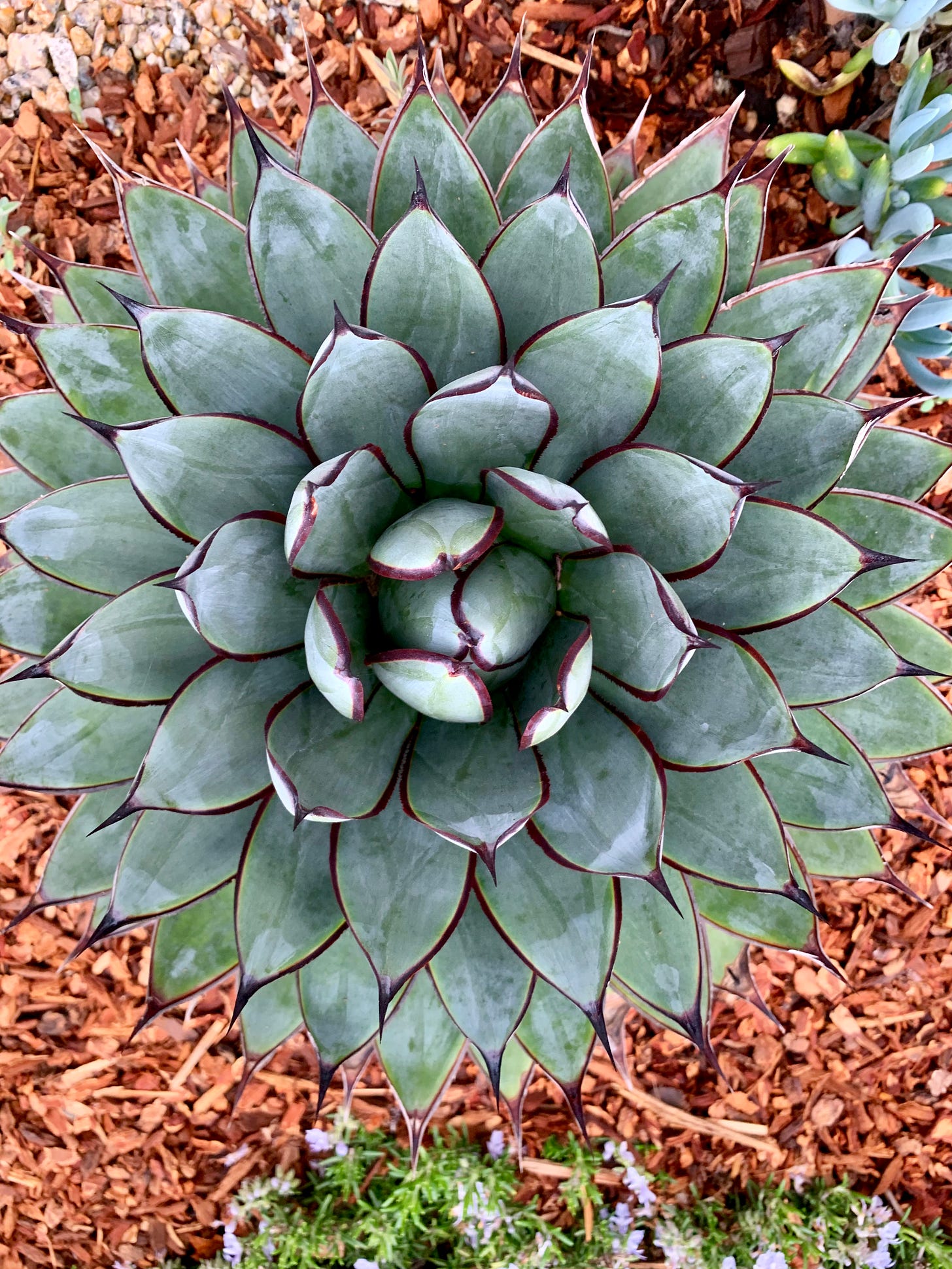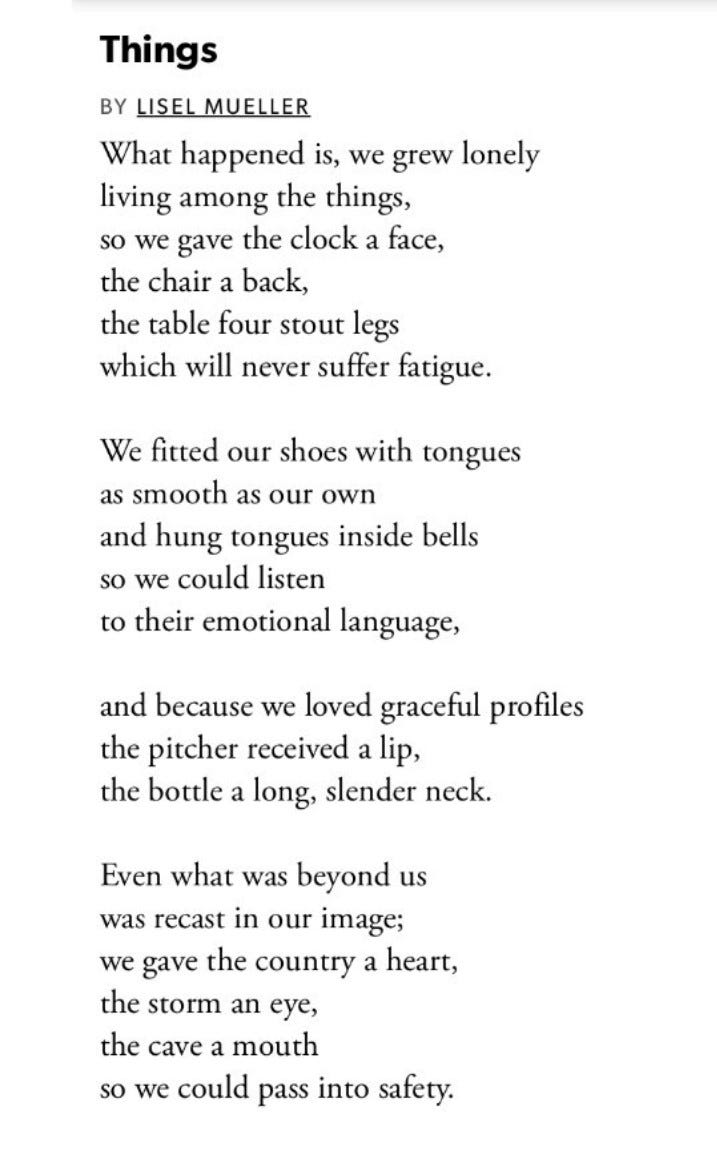This too shall pass, this too shall pass
Of snail moments, enchanted gardens, and finding refuge in poetry

Dear readers, I am going to start off by saying what I always do whenever I am communicating with anyone these days: I hope you’re all staying safe and well. Last Tuesday marked a month since we arrived in States and needless to say, it’s been one of the longest months ever (as it has for many of us), especially as we are now halfway through the third week of lockdown here in California. The other day, when I sat down to write in my daily planner (more of to-document moments, than plans, honestly speaking), I found myself wondering, was it only a week ago when we went to the cactus garden? Was it only five days ago when I video-chatted with D and C? Like so many of us, I too had become accustomed to saying, wasn’t it only January? It’s April already, where does the time fly by? But it is not flying right now, rather, crawling slowly and steadily, like the snails we often spot on the trails we go for walks upon. What is a moment for a snail?* What does a moment mean to you nowadays?
For me, every day is a changing mood weather-report: sometimes, when the clouds hang heavy and low, I become despondent and wonder for the nth time why we found ourselves here in States now of all the times. And other times, when the clouds clear, the sun shining, and the sky blue, I find myself grateful simply for these gifts along with so much else.
Speaking of the cactus garden, I found myself escaping to two gardens in the last few days. I have always loved gardens, these fragrant, colorful, green ordered, self-contained spaces, an outside room of sorts. The first garden I loved and spent a lot of time in was the one at my maternal uncle and grandparents’ home in Jodhpur. My grandfather was a botanist who dearly loved plants and even though he passed away many decades ago, his garden still thrives, full of custard apple, pomegranate, papaya, and lemon trees, bougainvillea bushes, a yew kind of tree with tiny conical gray-blue fruits, and ghosts of once fruit-heavy jamun trees. I loved sitting on a green metal bench overlooking the garden especially at dusk during the summer, watching children conduct kite fights from terraces or the air turn an especially vivid, surreal peach-sepia color that I exclusively associate with Jodhpur sunsets. On rainy nights, the pale pink-red flowers of the Rangoon creeper draping the sandstone walls would fill the air with such an evocative fragrance that even now I cannot pass by one at night without thinking of the Jodhpur garden. During my winter visits, when mornings were especially pleasant, I would sit outside with my grandmother, helping her sort through fresh winter produce: gleaming peas, bundles of spinach, and long knobby red carrots, gossiping, drying my freshly bathed hair in that delicious winter sunlight. Just writing about it now gives me peace, retreating into this garden of memories, where incidentally I was also known to indulge in make-believe plays and pretend that we were lost inside a forest.
Some years ago, while reading one of my favorite books, William Dalrymple’s City of Djinns, I learned that the word, paradise is derived from the Persian word, pairidaēza which in turn means a walled garden. And ever since then, whenever I have discovered and fallen in love with a new garden, I always remember gardens’ association with paradise, a stylised theatre of botany, beauty, and order exquisitely converging together to create paradise as close as it comes on earth in form of gardens.

In the past few weeks, oscillating between boredom, anxiety, bewilderment, and general lassitude, I am grateful that I stumbled upon two gardens in the vicinity, which still remain open to public (many parks and playgrounds have closed now due to crowding concerns). One of these gardens is Elizabeth Gamble Garden, a Palo Alto historic property. I visited it one rainy afternoon when I was feeling especially dispirited - and I wish I could describe how swiftly the garden drove away my gloom as soon as I entered it. There was such a surfeit of beauty that I scarcely knew where to look: pink-yellow, deep purple, and raspberry colored tulips, so many, many camellia bushes with their on-point petal-perfection, narcissi, wisteria, blooming magnolia and pear trees, and a Van Gogh painting of what appeared to be a cherry blossom blooming against brick wall. Having just stopped raining, each petal was enveloped in a thousand rain-drops, enhancing their beauty and scent even further. Needless to say, I left feeling thoroughly enchanted and returned there once again a few days ago when I needed another strong dose of garden magic. When it is finally time to say goodbye to this town, I will always fondly and gratefully remember this garden for all the solace it gave me.

The other garden was Arizona Cactus Garden tucked away inside Stanford University’s Aboretum. As someone who grew up in a desert and whose roots lie in Rajasthan, I have always had a special place in my heart for desert cacti, greatly admiring their endurance and sheer dedication to the business of surviving no matter how harsh their environment or challenging their conditions. The garden was no exception, an archipelago of cacti and succulent islands, each with a distinct personality and containing much to marvel and linger over: the jaw-dropping symmetry of succulents, sunlight-colored blooms bursting from cacti, and intricate Christmas-tree shaped flowers of another. The sight of these plants is a powerful reminder that deserts are not sterile spaces, they are lively gardens, in their own right. The huge spreading yucca plants also reminded me of this piece I wrote ages ago, inspired by a specimen I had seen in the cactus room at Phipps Conservatory, Pittsburgh, where it made me think of an octopus reclining on a sea-bed.

The Conservatory along with the nearby Carnegie Museum and Library were among my favorite places in Pittsburgh. I first visited the Conservatory on a frosty February afternoon soon after moving to the city. As I walked past the large, flamboyant tropical plants, which practically exuded warmth, I spotted the fantastical works of the glass sculptor, Dale Chihuly juxtaposed with the foliage. I thought it was such a great idea to introduce these large-scale glass installations or smaller sculptures into these spaces, making you see both the plants and art in an entirely unique way, adding further layers to the space. In this image, Chihuly sculpture looks like the roots of an alien creature, seemingly bursting forth to meet us down below. I thought of a picture I saw on Twitter the other day, the Barbara Hepworth Museum and Sculpture garden right now in spring time. Can you imagine anything more magical than walking around there right now, the blooming trees shedding petals upon these fantastical sculptures and transporting you to an alternate universe altogether? In our present state of mind, what more could we need or ask for?

Well, it’s certainly been a lot of garden talk for today so I am going to end with this short story, The Woman Who Was A Part Time Bougainvillea Tree I wrote sometime ago, inspired by my love for bougainvillea and gardens. If you have a chance, please do have a read and let me know what you think!
I started writing this newsletter on the last day of March and it is now the third day of April. April is the cruellest month, everybody has been reminding each other, thanks to the opening line of TS Eliot’s iconic poem, The Wasteland (I really should read it again, I haven’t read it since university) but let’s just hope for the world’s sake, it is a much kinder one. I am meanwhile spending this month writing a poem every day all through April as part of National Poetry Month’s #napowrimo exercise. I first took up this challenge in April 2017 and this is my fourth year embarking on this journey, wondering what kind of poems my - our - present state of mind will yield. This year, both in the act of writing and reading it, I am finding a refuge more than ever in poetry, trying to understand and process all that is happening in our worlds and minds through words.
The coming weeks for all of us will continue to be fraught with uncertainty, weeks of wait, and so many, many questions and wonderings. Please keep on taking good care of yourselves: eat properly, rest well, and be kind to yourself. This too shall pass, I keep reminding myself as others tell me too, this too shall pass. And it will.
Leaving you with this lovely poem:

Much love,
Priyanka
*Soul-food:
Speaking of snail time, Sumana Roy writes beautifully about it here
Nisha Susan’s gorgeous ode to what home means
Why social distancing has previously worked in United States
Siddhartha Mukherjee’s fantastic New Yorker piece on how the cornavirus behaves inside a patient
David Kessler giving a name to what we’re all feeling right now: grief
This exquisitely beautiful, heartbreaking meditation on grief, loss, and Planet Earth



